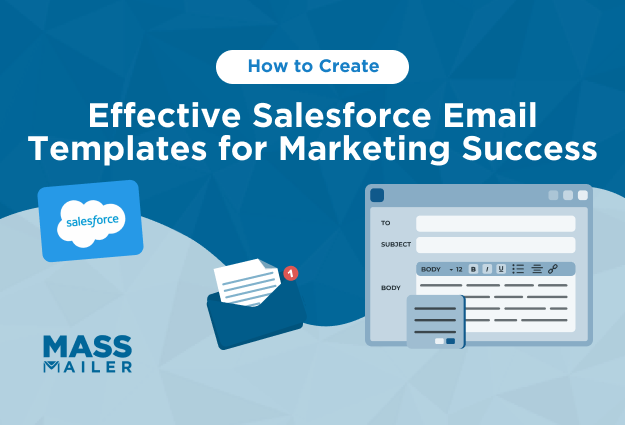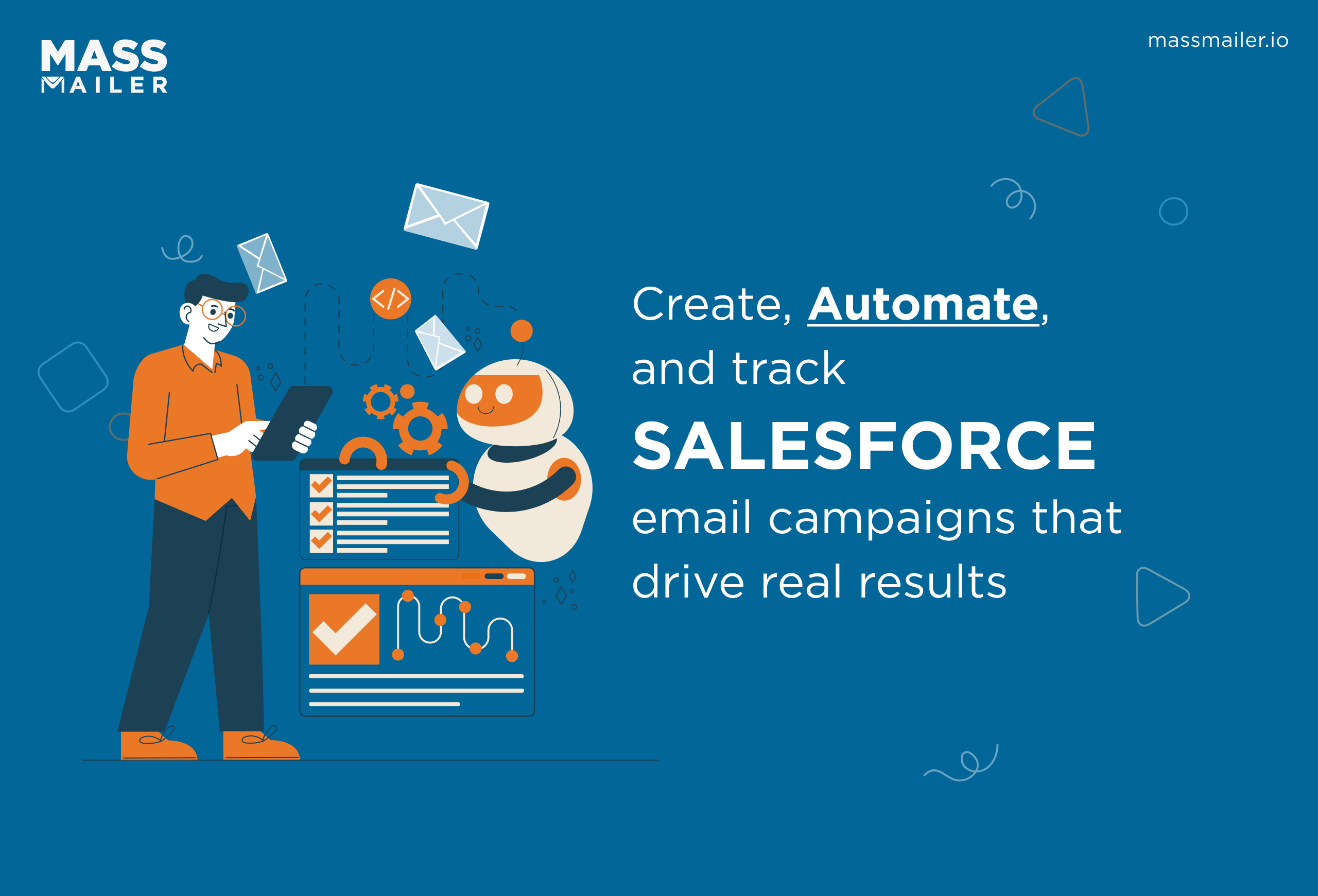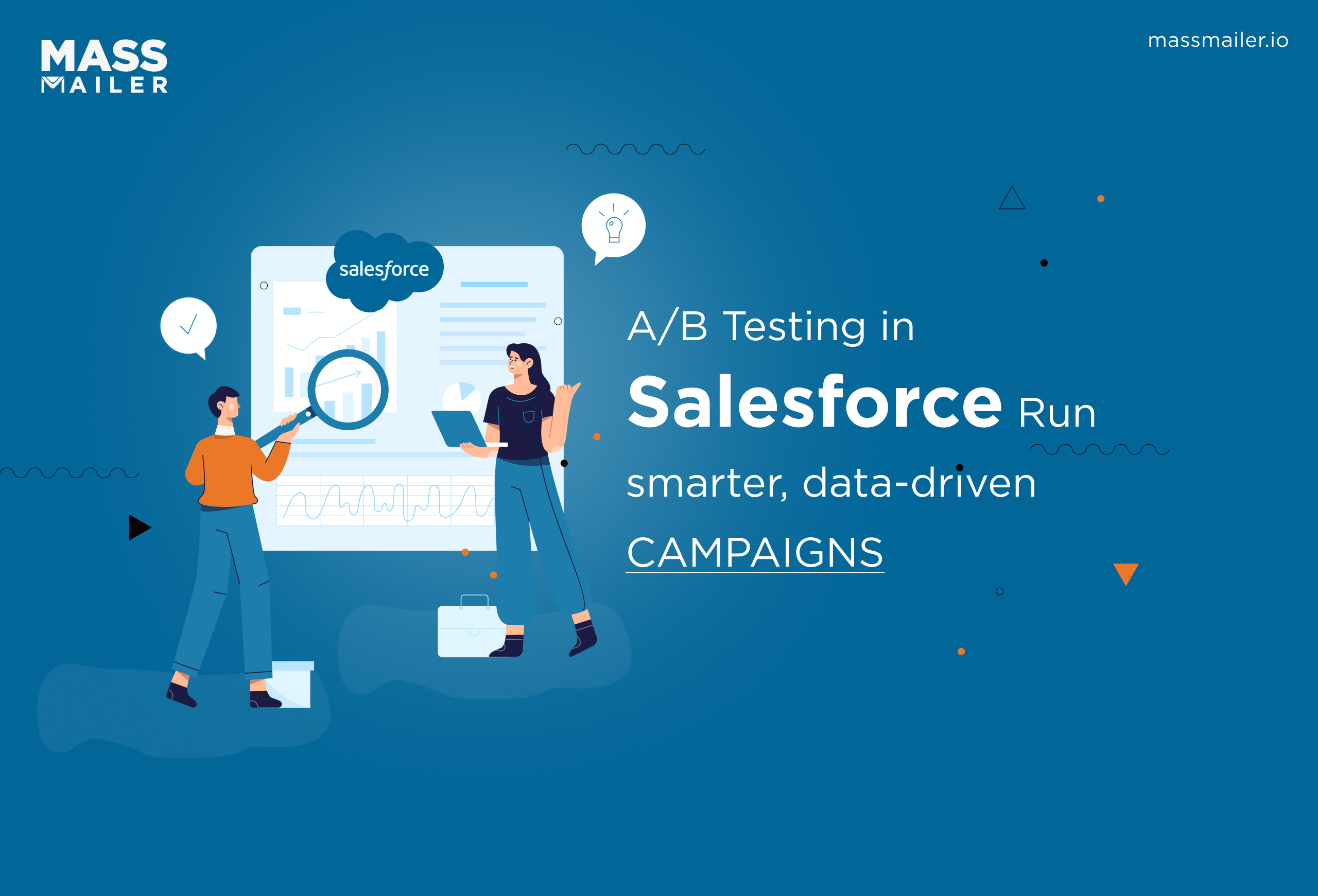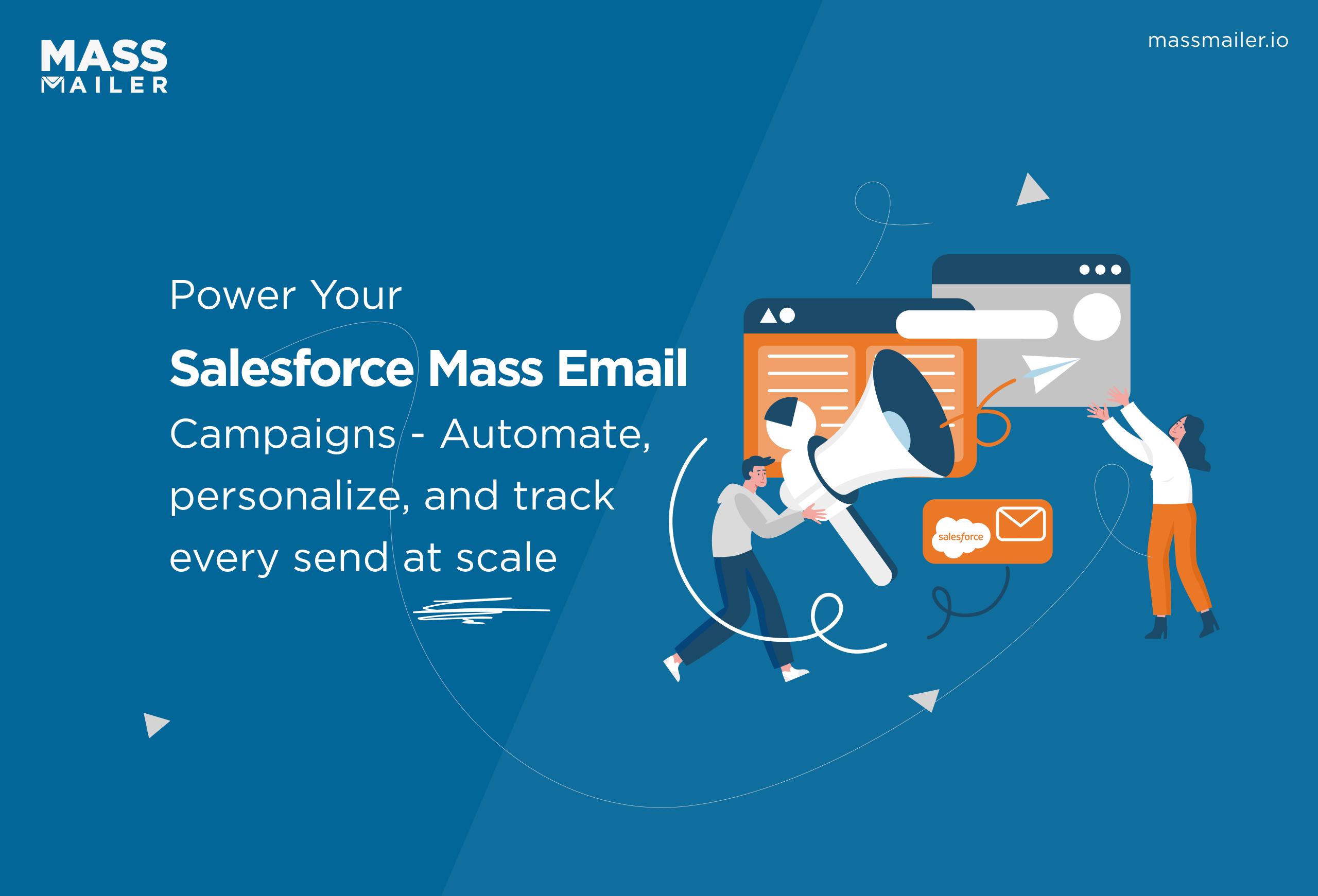Table of Contents
Introduction
As we all know, email isn’t new. The first mass marketing email was sent back in the late 20th century (1978) to a mere 400 recipients.

It has been just over four decades since the first email marketing campaign, and the differences that technological advancements have brought to this industry are nothing short of phenomenal.
Businesses can now conveniently automate their email marketing campaigns for thousands of recipients at the same time and personalize every single email as well.
In fact, in 2023, according to Statista, email marketing revenue was estimated to be about 10 million USD. Half of the marketers reported a two-times improvement rate in their ROI through email marketing. This highlights the significant impact and effectiveness of email marketing strategies in driving revenue and improving return on investment (ROI) for businesses.
Salesforce has been pivotal in heralding the customer-first marketing ideology through its targeted and efficient email marketing tools. The platform makes it extremely easy to create email campaigns and customize them according to the target audience.
The biggest benefit for businesses from Salesforce emails is the availability of templates to quickly create custom emails and mobilize the marketing campaign.
Furthermore, the availability of Salesforce native apps like MassMailer, designed specifically for optimizing email marketing, streamlines the entire process even more.
Through this blog, let’s understand how you can leverage Salesforce email templates to your benefit.
What is a Salesforce Email Template?
Salesforce email templates are pre-designed email layouts that can be personalized and used to send communication at scale within the Salesforce ecosystem. Email templates are the foundation of effective email marketing, support, and follow-up campaigns.
These templates are highly customizable, allowing you to integrate merge fields (dynamic placeholders for personalizing email content) and align with your branding for consistency.
Instead of creating an email from scratch every time you need to reach out to a customer, you can use these templates to ensure you’re delivering timely, relevant, and professional communication that feels personal yet automated. This saves time and ensures that your team is always on-brand.
Types of Salesforce Email Templates
Salesforce offers several types of email templates, each designed to serve different needs and use cases. Whether you need something simple and straightforward or a highly customized, visually engaging design, there’s an option that can meet your requirements. Let’s take a closer look at the various types of Salesforce email templates and their unique benefits.
Text Email Templates
Text-based email templates are the simplest form of Salesforce email templates. They contain no images, HTML formatting, or advanced elements, just plain text. These are useful when you need to send short, quick messages and when your audience values simplicity.
While these templates are easy to create and lightweight, they may not be as engaging as HTML-based templates.
HTML Email Templates
HTML email templates allow you to create visually appealing, branded emails with custom formatting. These templates are ideal for newsletters, promotional offers, and other marketing messages where design plays a crucial role in driving engagement. With HTML emails, you can include images, color schemes, logos, and other elements that reflect your company’s identity.
HTML email templates also offer the benefit of responsiveness, meaning they can be designed to automatically adjust to mobile and desktop screen sizes. This is crucial since a significant percentage of emails are read on mobile devices.
Custom Email Templates
Custom email templates are tailored specifically to your business needs. You can design these templates from scratch, incorporating both text and HTML elements to meet your objectives. Custom templates allow for high flexibility, enabling you to create dynamic content that aligns with different marketing or sales campaigns.
Custom templates often come with advanced personalization, where you can include specific product recommendations or details related to the recipient’s journey. Salesforce’s merge fields let you insert dynamic data into these templates, such as first names, account details, or specific product interests.
Whether you’re sending a simple text-based message, a fully designed HTML email, or a custom template tailored to your brand, choosing the right format can streamline your communication and enhance engagement.
Top 5 Benefits of Salesforce Email Templates
We live in a time when customers are smart and would not spend a second of their time on emails that are boring. Salesforce templates are written with the customer in mind and have the option for personalization to make them sound more appealing.
Here are five compelling reasons to leverage Salesforce email templates:
- Time Efficiency and Enhanced Productivity: Pre-designed templates save time and boost team productivity. Dynamic elements like email signatures can be easily included for quick customization.
- Reduced Human Errors: Automate email marketing processes to minimize errors and ensure consistent communication.
- Brand Consistency: Maintain brand integrity with standardized templates, promoting uniform messaging across your organization.
- Scalability and Ease of Use: You can develop templates that can be utilized by various team members, streamlining communication at scale.
- Data Integration and Customization: Seamlessly incorporate complex data into emails using template fields, facilitating rapid data merging and personalized content delivery.
These templates not only streamline communication but also enhance customer engagement, making it easier to execute effective email marketing strategies at scale.
How to Create Salesforce Email Templates
Essentially, to create customized emails in Salesforce, you have three distinct options:
- Select templates through Classic builder
- Select templates through Lightning Experience
- Build your own template with Lightning Experience
The three types of templates provide you with distinct features in their own suite. The best part is that you can use any kind of template within an organization.
The table below highlights the unique properties of each email template in Salesforce: Classic, Lightning Experience, and Email Template Builder.
| Feature/Property | Classic | Lighting Experience | Email Template Builder |
|---|---|---|---|
| Letterhead | Only Classic letterhead | Only enhanced letterhead | None |
| Visualforce | Yes | Yes, but not editable | No |
| Header |
Yes
|
Yes | No |
| Footer | Yes | Yes | No |
| Drag and Drop | No | No | Yes |
| Sales engagement mails | No | Yes | Yes |
| Email templates home | No | Yes | Yes |
| Email folders | Classic folders | Enhanced folders | Enhanced folders |
| Email limits | Yes | Yes | Yes |
| Pardot compatibility | No | No | Yes |
| Workflows | Yes | Yes | Yes |
| Email automation | Yes | Yes | Yes |
As is evident, the Classic and Lightning email builders are fixed-type email builders that provide you with less flexible options for email customizations.
On the other hand, the Email Template Builder is a toolset you can use to build your templates from scratch. It doesn’t offer any ready features (like letterheads) from the get-go.
Since Lightning email builder is the most recent version in Salesforce, this blog will focus on building templates and emails using Lightning.
Create Email Templates in Salesforce Lightning
It is quite simple to create email templates in Salesforce Lightning. Follow the steps detailed below to get started.
- Open your dashboard on Salesforce. In the top-left corner, spot the Menu icon (a square grid of nine dots). Click on it.
- In the drop-down menu, locate the “Email Templates” option. Click on it.
- You now need to select “Create New Template.” A dialogue box will open up, asking you for details such as the name of the template, description, entity attributes, folders (public or private), the content of the message, letterhead, etc. Fill in every piece of information.
- Save your template.
- You will be redirected to the next screen. Spot the “Edit in Builder” button on the top right corner and click on it.
- The next screen will allow you to edit your template for properties like background color, adding or changing media, and more. This is your email template builder equipped with drag-and-drop functionality that lets you build your template the way you like.
- Save your template once you are satisfied with the design.
Useful Features of Lightning Email Template Builder
The Lightning Email Template Builder is quite intuitive. The left sidebar comprises all the components you can drag and drop onto your templates, like buttons, images, rich text, and more.
The right sidebar allows you to customize the content and style. The menu bar that runs along the top lets you customize your email for desktop or mobile device viewing.
Drawbacks of Email Templates in Salesforce
For all the great functionality that Lightning Email Builder comes with, it does have certain quirks that make it a little problematic to use. The list below highlights the limitations of Lightning Email Builder in Salesforce:
- As discussed earlier, the email templates on Classic cannot be edited in the Content Builder. If you want certain elements changed, you will need to build a new template in the Lightning Builder.
- Salesforce also has a Marketing Cloud with an Email Studio, which, frankly, is a more powerful marketing suite. The Lightning Email Builder isn’t as savvy or robust as the Email Studio.
- Classic templates, while a little dated, provided certain functionality that would have been nice to have on Lightning:
- Verify Merge and Send Test options
- Creating internal email alerts by attaching links directly to the Record Type
- While Merge Fields is available for activity-enabled objects, it doesn’t support Contact or Lead objects yet, which is a limitation.
Whether you’re using Salesforce Classic, Lightning, or the Email Template Builder, understanding how to create and optimize these templates is key to creating optimized emails to improve customer experience and engagement.
Conclusion
A well-composed email that is personalized for a target group makes a statement for the business that sends it. This is one of the major reasons email marketing is so effective today – for the brand and for the customer.
Today, it is even more important to create impactful emails than ever before. The number of emails sent daily around the globe is increasing each year, and the projection is that it will reach 392.5 billion by 2026.
To that end, Salesforce Lightning Builder is an excellent tool to have. If you would rather use a dedicated email marketing tool that integrates well with Salesforce, you can try MassMailer. It is a Salesforce-native email marketing app that lets you organize bulk marketing campaigns with hyper-personalized content.
To begin your free trial, click here – MassMailer.
Frequently Asked Questions
Can I personalize Salesforce email templates?
Yes, Salesforce email templates allow you to add merge fields that dynamically personalize each email. You can easily include the recipient’s first name, company name, and other custom data, creating a more engaging, individualized experience.
How do I track the performance of my Salesforce email templates?
Salesforce integrates with analytics tools that provide insights into email performance. You can track metrics like open rates, click-through rates, conversion rates, and more, helping you understand the effectiveness of your email campaigns.
Which version of Salesforce should I use for email templates?
Salesforce Lightning is the recommended version for most users due to its modern interface, enhanced design capabilities, and better integration with other features. However, Salesforce Classic is still available for those who prefer its traditional layout.
How can I make my Salesforce email templates mobile-friendly?
Salesforce Lightning and the Email Template Builder offer responsive design features, which ensure your email templates automatically adjust for mobile devices. It’s essential to test your templates across different devices before sending them out.
What are the types of Salesforce email templates available?
- Text Email Templates: Simple and lightweight for quick communication.
- HTML Email Templates: Visually engaging emails with images and custom formatting, perfect for marketing and newsletters.
- Custom Email Templates: Tailored designs for specific business needs, allowing advanced personalization and dynamic content.
What are the limitations of Salesforce email templates?
While Salesforce email templates are powerful, there are some limitations:
- Classic Templates: Cannot be edited in the Content Builder and may lack modern features.
- Merge Field Limitations: Merge fields currently don’t support Contact or Lead objects, which limits personalization in certain cases.
Start Your Free Trial Today
Experience MassMailer the easiest way to send personalized emails from Salesforce.
Related Blogs

How to Create and Optimize Salesforce Email Campaigns with MassMailer

A/B Testing in Salesforce: A Step-by-Step Guide to Boost Email Campaigns

Mastering Salesforce Mass Email Campaigns: Best Practices & Tools
MassMailer Resources
MassMailer Glossary





